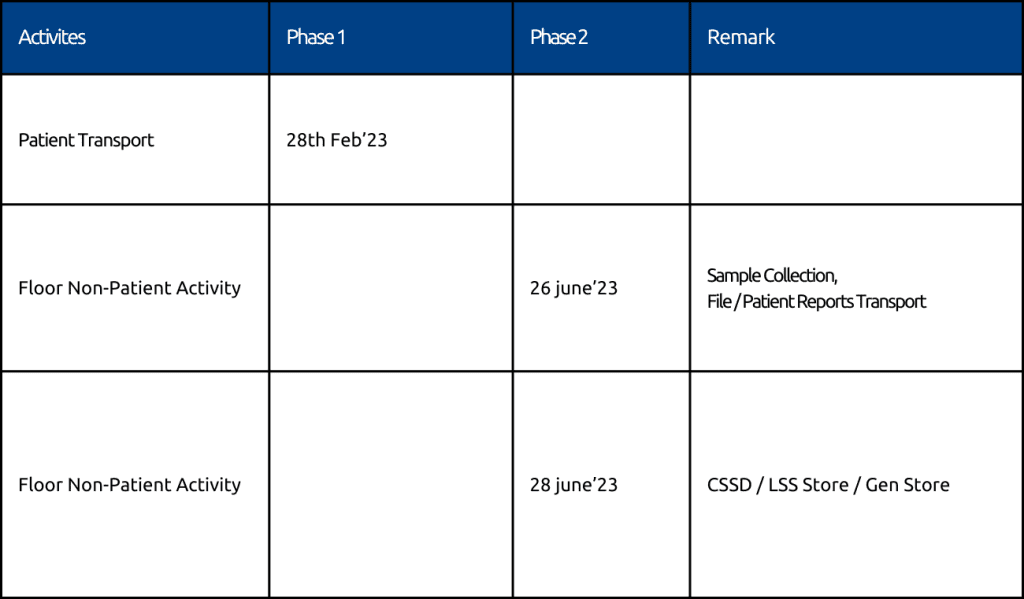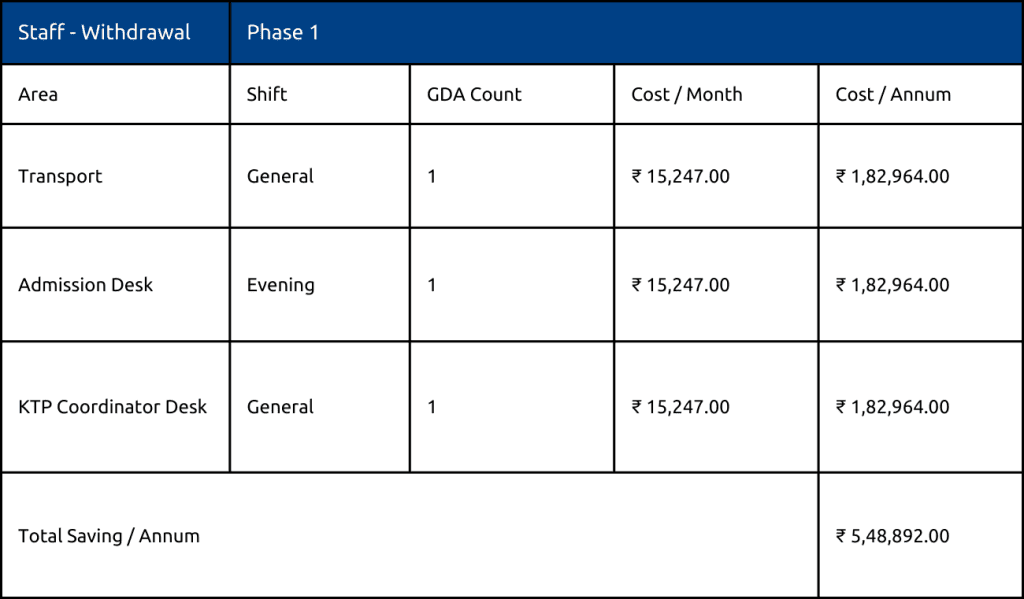Porter Management System- Digitalization of Patient Transport
Read the Magazine in PDF
Abstract
Implementing a digital Porter management system has sparked a patient care revolution within the hospital. By systematically addressing persistent issues, this innovation has significantly reduced patient wait times, eliminated productivity losses, and markedly elevated patient satisfaction. This transformative approach not only augments the efficiency and effectiveness of patient care but also paves the way for seamless hospital operations. Through the judicious application of modern technology and a forward-thinking approach, the hospital has taken a momentous stride toward delivering top-tier healthcare services. Thus, in the present article, we will explore the effectiveness of using this system within the hospital.
Introduction
Efficient patient care is at the heart of every successful healthcare institution. The ability to swiftly and effectively transport patients, reports, files, and supplies within a hospital can significantly impact the patient experience. In recognition of this, a dedicated team embarked on a project with a precise aim: to enhance the efficiency and effectiveness of patient care by implementing a digital Porter management system. This innovative solution streamlines porters’ allocation, coordination, and tracking, ensuring prompt and seamless transportation within the hospital premises.
Before introducing this digital system, the hospital staff and patients faced considerable challenges managing patient transportation because of the outdated manual system. Everything was paper-based, and porters were assigned manually, resulting in delays, misunderstandings, and an inability to track patients in real time as they moved within the hospital. The impact of this outdated system was significant – patients often needed to receive the care they needed on time, leading to dissatisfaction and added stress for all involved.
Identifying the Problem
The hospital identified a few key issues stemming from the archaic system:
- Long wait times for patients: This was due to the manual system and resulted in causing patients to wait longer than necessary.
- Productive time loss for all stakeholders: Manual coordination consumed valuable time for staff and porters.
- Patient dissatisfaction: These delays and inefficiencies left patients unsatisfied with their hospital experience.
Addressing the Problem
To address these challenges, the project had a clear scope of services, including:
- Outpatient (OPD) and Inpatient (IPD) patient transportation
- Pharmacy medication delivery.
- General transportation within the hospital (e.g., Blood Center, CSSD, Lab, etc.)
The project’s success hinged on critical steps:
- Identification of a third-party service provider, Trackerwave.
- A detailed survey of the hospital to understand the logistics.
- Acquisition of the necessary budget
- Hardware installation for the digital Porter management system.
- Formation of a dedicated porter team for training
- Providing training to all stakeholders, including those requesting Porter services
- We are equipping the Porter management team with pink-coloured jackets for easy identification.
The Innovative Solution
The digital porter management system uses beacon technology and the Internet of Things (IoT) for real-time location tracking of porters and job allocation, like the rental transport booking services of Ola and Uber.
This efficient allocation has had a profound impact:
- Reduced Turnaround Time (TAT): The time from a request being raised to a patient being dropped has been significantly reduced from 20 minutes to just 15 minutes. This swift service ensures that patients receive care promptly.
- Individual Performance Tracking: The system tracks each porter’s performance, allowing for recognition and rewards for outstanding service.
- Increased Availability of General Duty Assistants (GDA): By optimizing the allocation of porters, there is now a greater availability of GDAs in inpatient areas, ensuring that the needs of patients are met promptly.
- Fewer Patient Complaints: The reduction in delays and errors has led to a decrease in patient complaints, improving overall patient satisfaction.


Conclusion
The implementation of a digital Porter management system has brought a revolution in patient care at the hospital. It has addressed long-standing issues, reducing wait times for patients, eliminating productivity losses, and increasing patient satisfaction. This innovative approach not only enhances the efficiency and effectiveness of patient care but also ensures that the hospital operates smoothly. With the use of modern technology and a proactive approach, the hospital has successfully taken a significant step toward providing superior healthcare services.




